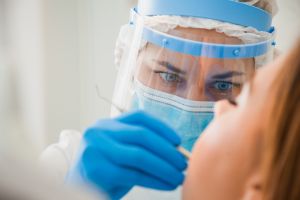
Supported by CENSIS, experts from Heriot-Watt University, the University of Edinburgh, and the Real Good Dental Company are exploring new methods to minimise the risk of dentists and patients being exposed to contaminated air, improving the safety of aerosol generating procedures that have been linked to the airborne transmission of infections such as Covid-19.
The research team of Dr Cathal Cummins of Heriot-Watt University’s School of Mathematical and Computer Sciences and Institute for Infrastructure and Environment and Dr Felicity Mehendale of the University of Edinburgh’s Usher Institute, is developing a sensor-led system that could allow dentists to detect air pockets that contain infected aerosol and droplets.
The project aims to find the best combination of sensors – including carbon dioxide and humidity identifiers – that can be used to create a spatial risk map of a room or area in a dental practice, with multiple sensor arrays tracking the position and movement of aerosol clouds. The system could allow health professionals to monitor the risk level in real-time, identify any spikes and enable them to take appropriate action, such as providing additional PPE and using air extraction techniques or disinfectants.
While air quality monitoring is becoming more mainstream, with many devices now available to provide an indication of carbon dioxide levels in homes and other spaces, these are usually restricted to one fixed point in a room. Using multiple sensors to map the risk level of the entire space could allow dentists to continue performing aerosol generating procedures with added confidence for both patient and dentist that air quality is being carefully and accurately monitored.
The project builds on the team’s recently published research, in which they developed a mathematical model to predict the behaviour and spread of airborne droplets and the impact of a local aerosol extraction device. The team developed and tested a working prototype for system designed to contain and extract aerosol as close to its source as possible and reduce the volume of aerosol that can spread across a room, therefore, keeping any contamination risks contained to a smaller area.
Following successful development of the sensor array, the project team will now test the system in a simulated dentist environment using dummy patients to map the aerosol spread during treatments and procedures, such as drilling. A suitable interface and algorithm will then be developed to help dentists interpret the data, which could also be linked to an alert system similar to carbon monoxide or smoke detectors.
Listen to Dr Cathal Cummins explain the project findings so far. A transcript of this short video is also available.
The project was initiated in response to ‘IoT for Good’, a call from network provider North which offered free access to its IoT Scotland network for work responding to Covid-19 challenges.